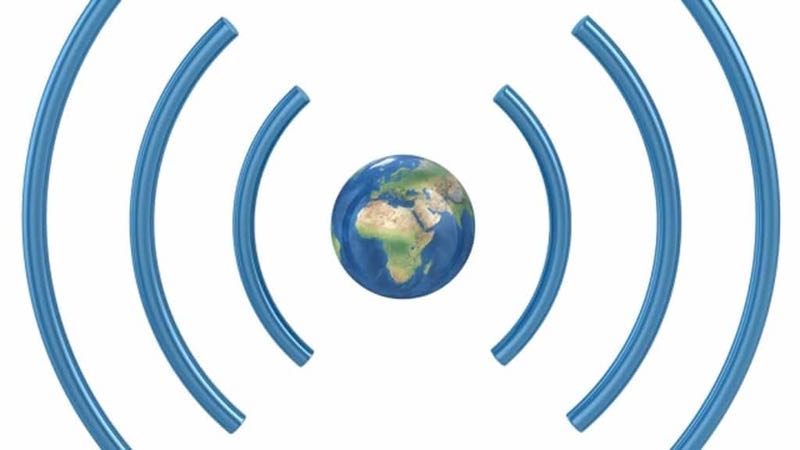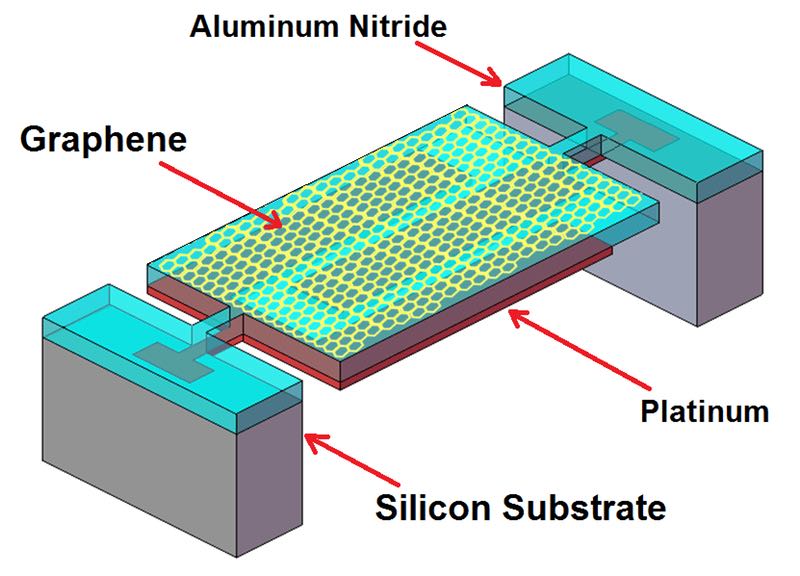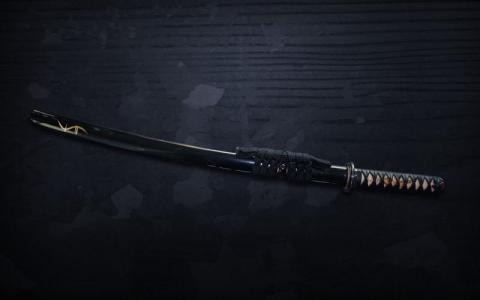EPFL Researchers Have Fabricated Graphene On A Modular Device that could make wireless communication systems much faster and efficient. Their system can operate at very high frequencies, and with optimal performance reached.
Call using a 4G or 5G communication system, plug your GPS, or connect your computer via Bluetooth to a mobile sensor … all wireless forms of communication that use different frequency bands. To be multitasking, connected objects must operate over a range of frequencies, without the hassle of bulky devices.
Currently, most mobile and wireless systems have circuitry capable of reconfiguring itself, and to modulate the antenna to transmit and receive data in different frequency bands. Only problem: the silicon or metal technologies are not well suited to high frequencies, where the information could circulate more quickly. At EPFL, researchers made a flexible graphene device, which allows circuits to perform as well at low to very high frequencies, with unprecedented efficiency. Their work is published in Nanoletters.
 Graphene Frequency
Graphene Frequency
Developed In The Laboratory Of Nanoelectronics Devices
the new device based on graphene is to replace a component present on all wireless communication objects: the modular capacitors. Their role is to “resonate” circuits at different frequencies, so they operate with maximum frequency bands. For now, MEMS or MOS capacitors are able to simultaneously meet the performance in high frequency applications, miniaturization and low power modulation.
EPFL researchers have managed to overcome these obstacles by making a capacitor graphene-based, compatible with traditional circuits. The device consumes very little power, and gets beyond 2.1 GHz Graphene Frequency, far superior performance to those of its competitors, while being miniaturized. “With a conventional MEMS, the surface should be a thousand times for the same capacitance value,” illustrates Clara Moldovan.
How It Works ?
The feat of researchers based on a smart building “sandwich”, which allows to make the most of graphene. “When it was discovered there over 10 years, graphene has generated much interest. Very good electrical and thermal conductor, flexible, lightweight, transparent and resistant, it was considered a miracle material. But we realized that it was difficult to implant in electronic systems, because of its high effective resistance due to its atomic thickness, explains Clara Moldovan.
 Graphene Resonator
Graphene Resonator
The new structure exploits the fact that a two-dimensional electron gas in a quantum well can act as a quantum capacity, mainly exploiting the Pauli principle, which requires some energy to perform a quantum well with electrons. This phenomenon of quantum capacitance is relatively easy to measure in a mono-atomic layer graphene, and is adjustable by varying the charge density in graphene with tension. “By applying a voltage, we can” fix “our capacitor on a given frequency, just as you set a radio to pick different channels,” says Clara Moldovan, first author of the publication.
The Many Benefits
Wide and long to a few hundred micrometers (approx. 0.05 cm), the new device can be rigid or flexible, highly miniaturized and consumes very little energy. The applications are numerous. In addition to improving data transfer between connected devices, it would extend the life of the batteries, and produce more compact cameras. Made of flexible material, the device is also the ideal candidate to be inserted into sensors in clothing, or directly on the human body. “Our results are a confirmation that graphene actually has the potential to revolutionize the future of wireless communications, Graphene Frequency ” said the researcher.
The resulting technology will be a hybrid type, for combining graphene with advanced silicon technology. “Unlike those who said that graphene is a future silicon replacement technology, in reality it operates its entire electronics value when combined with functional silicon blocks,” says the director of Nanolab, Adrian Ionescu Graphene Frequency.

